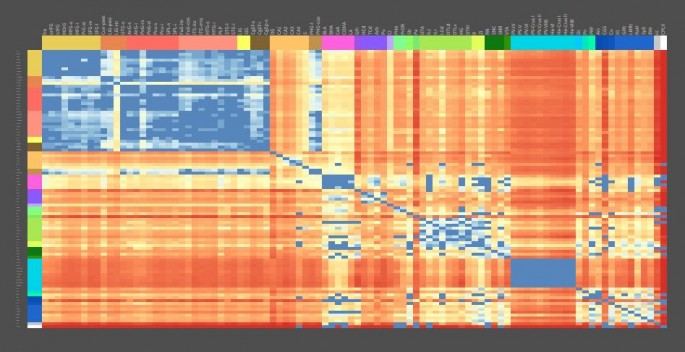The Allen Institute for Brain Science said it has taken the first major scientific step to create a searchable standards database for the brain with the launch of the Allen Cell Types Database on May 14.
This first release includes information on the location, electrical activity and shape of more than 240 neurons. The Allen Institute plans to release a database of different types of human brain cells in 2016.
The first release is a freely available online database (click here) that will eventually include thousands of nerve cells. As of now, the Allen Cell Types Database has detailed information on 240 mouse cells, including their distinctive shapes.
The Allen Cell Types Database is a new tool to help scientists create a list of the brain's building blocks, and to understand what makes one type of cell different from another. A video explaining the database can be viewed here.
"Identifying neuronal cell types is essential to unraveling the mystery of how the brain processes information and gives rise to perception, memory and consciousness," said Christof Koch, Ph.D., President and Chief Scientific Officer of the Allen Institute for Brain Science.
"This is the first resource of its kind to bring together multiple types of data -- shape, position in the brain and electrical activity -- in a single searchable database anywhere on the planet."
The Allen Cell Types Database also describes each cell by the electrical pattern it generates and will soon include information about which genes are expressed.
It contains detailed information on individual neurons from the mouse visual cortex. Their electrical activity in response to stimulation applied to their cell bodies was recorded with tiny electrodes before their shapes were captured in high resolution by a light microscope.
Digitally reconstructed morphologies for a subset of cells in the release and different types of computer models that faithfully simulate the electrical behavior of these cells will also be made available.
Included in the release is the Allen Software Development Kit or a companion source code repository containing neuronal models of the cells. This tool allows scientists to download the models and run their own virtual experiments.
Future data releases of the database will include cells from the human cortex and information about gene expression in individual cells.
Once researchers have a complete inventory of details about the brain's building blocks, they'll need to know which combinations of blocks can be connected. It's these connections that make us who we are.
"The fact that you remember very specific things -- that first summer day when you kissed your first girl -- that is due to the great specificity of your neural circuits," said Koch. "So that's what we have to understand."
On the other hand, Allan Jones, Ph.D., CEO of the Allen Institute said that to make progress in brain research, "we need established standards for all neuroscientists worldwide to share".
"These cell types may end up playing the same role in neuroscience as the periodic table does in chemistry", he said.
The publicly accessible database represents the first fruit of the Allen Institute's 10-year plan to understand how activity in the brain leads to perception, decision-making and action. Understanding cell type (or the brain's building blocks) is fundamental to making sense of how the healthy brain functions and what goes wrong in diseases such as autism, Alzheimer's and Parkinson's.
"Identifying neuronal cell types is essential to unraveling the mystery of how the brain processes information and gives rise to perception, memory and consciousness," said Koch.
"This is the first resource of its kind to bring together multiple types of data -- shape, position in the brain and electrical activity -- in a single searchable database anywhere on the planet."
Chinh Dang, Chief Technology Officer of the Allen Institute for Brain Science, said each cell in the database has an associated model of its electrical activity, which can be downloaded as part of the Allen SDK.
"The models allow interested scientists to not just observe the patterns of individual cells, but to make quantitative and analytical comparisons that will ultimately help differentiate between cell types."
An additional component of the data release is the Allen Institute's newest Science Vignette: a dynamic animation that guides users through a classification of cell types of the mouse visual cortex based on analyzing the thousands of genes that are expressed in single neurons.
The gene expression data for some 1,600 cells in the animation will also be made available. Both resources showcase the kind of future insights that can be gleaned from combining morphological, electrical and transcriptional analyses.
The Allen Institute for Brain Science is part of the Allen Institute, an independent, nonprofit medical research organization dedicated to accelerating the understanding of how the human brain works in health and disease.
Launched in 2003 with a seed contribution from founder and philanthropist Paul Allen (who co-founded Microsoft), the Allen Institute is supported by government, foundation and private funds to enable its projects.



























